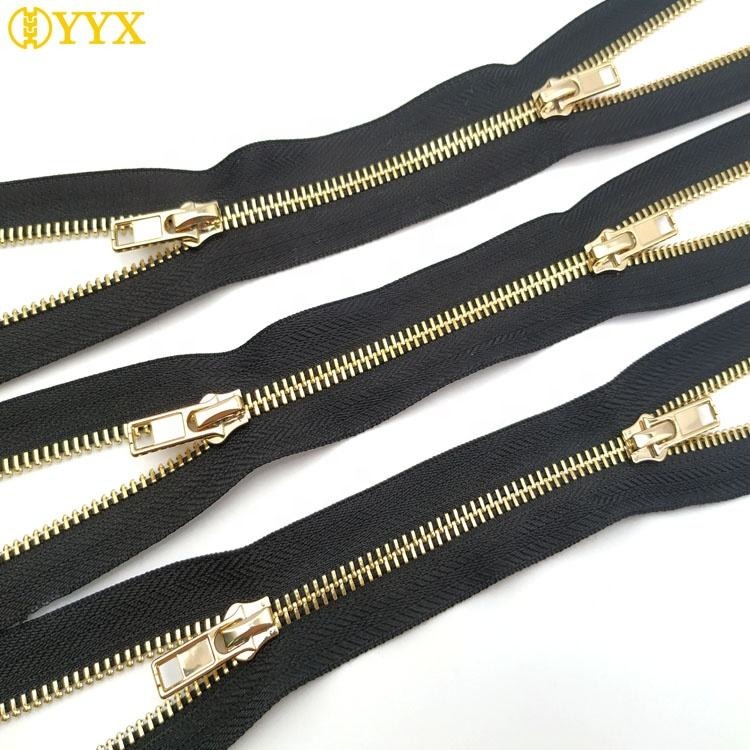Zippers are an integral part of our everyday lives, used in various applications, including clothing, bags, and accessories. When it comes to custom zippers, understanding the differences between different sizes is crucial in choosing the right option for your specific needs. In this article, we will explore the disparities between #3 and #4.5 zippers, shedding light on their characteristics, applications, and considerations for custom zipper selection.
1. Size and Teeth Width:
The primary distinction between #3 and #4.5 zippers lies in their size and teeth width. The number represents the size of the zipper tape in millimeters. A #3 zipper has a tape width of approximately 3mm, while a #4.5 zipper has a tape width of around 4.5mm. This difference in size directly affects the width of the teeth, with #4.5 zippers having wider teeth compared to #3 zippers.
1. Strength and Durability:
The wider teeth of #4.5 zippers provide them with increased strength and durability compared to #3 zippers. The larger teeth are better equipped to withstand higher stress and tension, making #4.5 zippers suitable for heavy-duty applications. If you anticipate frequent or demanding use of the zipper, such as in outdoor gear or bags that carry heavy items, opting for a #4.5 zipper may be the preferred choice.

1. Applications:
The choice between #3 and #4.5 zippers depends on the specific application and requirements. #3 zippers, with their smaller size and narrower teeth, are commonly used in lightweight applications such as garments, small bags, and accessories. They are suitable for delicate fabrics and items where flexibility is essential. On the other hand, #4.5 zippers are often employed in heavier fabrics and applications such as backpacks, duffel bags, tents, and outdoor gear that demand greater strength and durability.
1. Customization Options:
Custom zippers offer a wide range of possibilities to tailor the zipper to your unique preferences. Both #3 and #4.5 zippers can be customized in terms of color, length, puller style, and branding options. Whether you require a specific color scheme to match your product or desire a personalized logo or design on the puller, custom zipper manufacturers can accommodate these requirements for both #3 and #4.5 zippers.
1. Considerations for Custom Zipper Selection:
When selecting a custom zipper, it is essential to consider factors beyond size. Evaluate the specific needs of your project, including the intended use, fabric weight, and desired aesthetics. Determine the level of stress and durability required, as well as any specific customization requirements. Consulting with a reputable custom zipper manufacturer can provide valuable insights and guidance in making an informed decision.
1. Cost Considerations:
The cost of #3 and #4.5 zippers can vary depending on factors such as material quality, customization options, and order quantity. Generally, #4.5 zippers tend to be slightly more expensive due to their larger size and increased durability. However, the cost difference may be negligible for small-scale projects, while the added strength and longevity of #4.5 zippers make them a cost-effective choice for heavy-duty applications in the long run.
Conclusion:
Understanding the distinctions between #3 and #4.5 zippers is crucial for selecting the appropriate option for your custom zipper needs. While #3 zippers are smaller and more suitable for lightweight applications, #4.5 zippers offer greater strength and durability, making them ideal for heavy-duty purposes. Consider factors such as intended application, fabric weight, customization requirements, and budget when making your decision. By partnering with a reputable custom zipper manufacturer, you can ensure that your chosen zipper size meets your specific needs while providing the desired functionality and aesthetics for your project.


